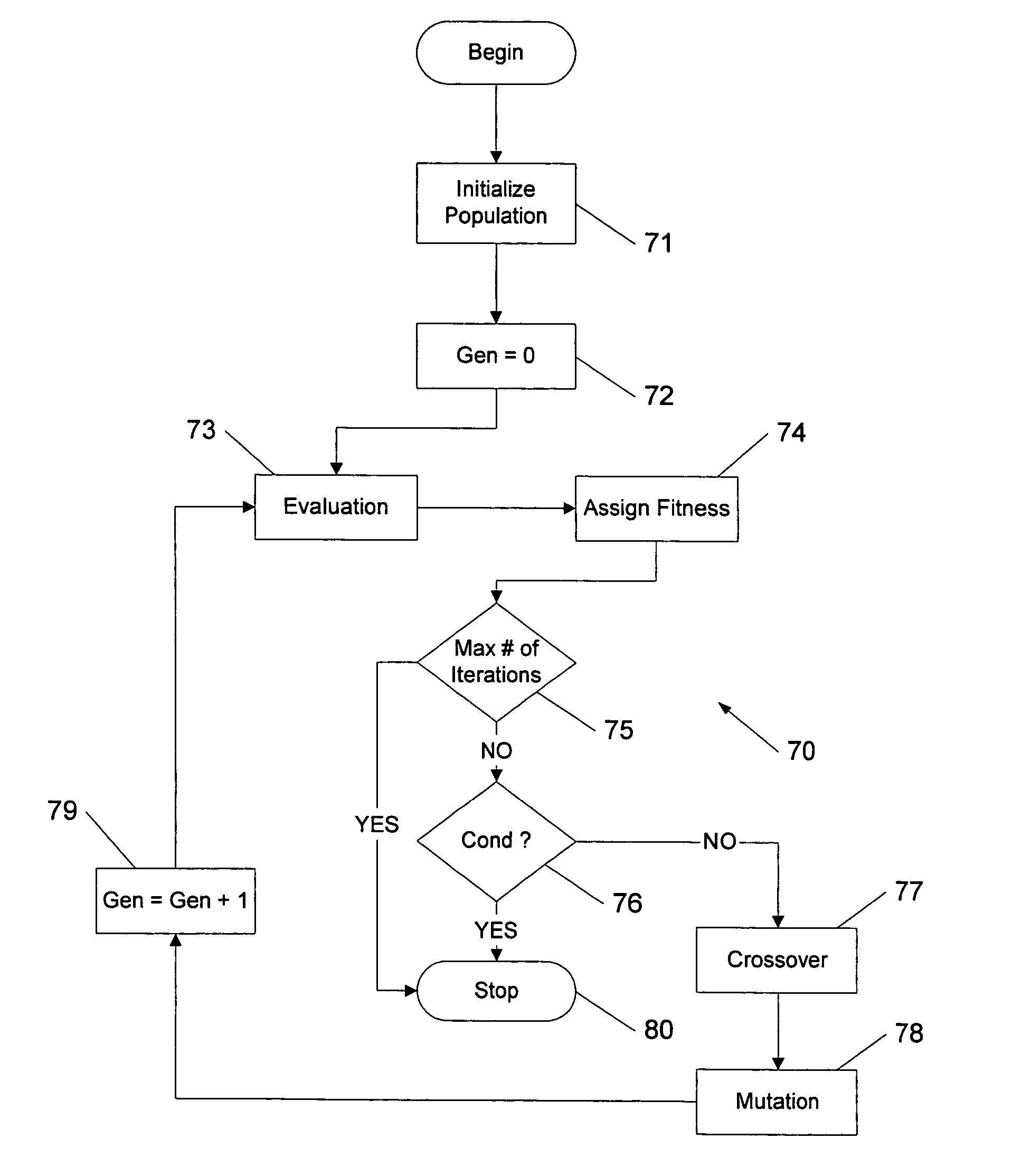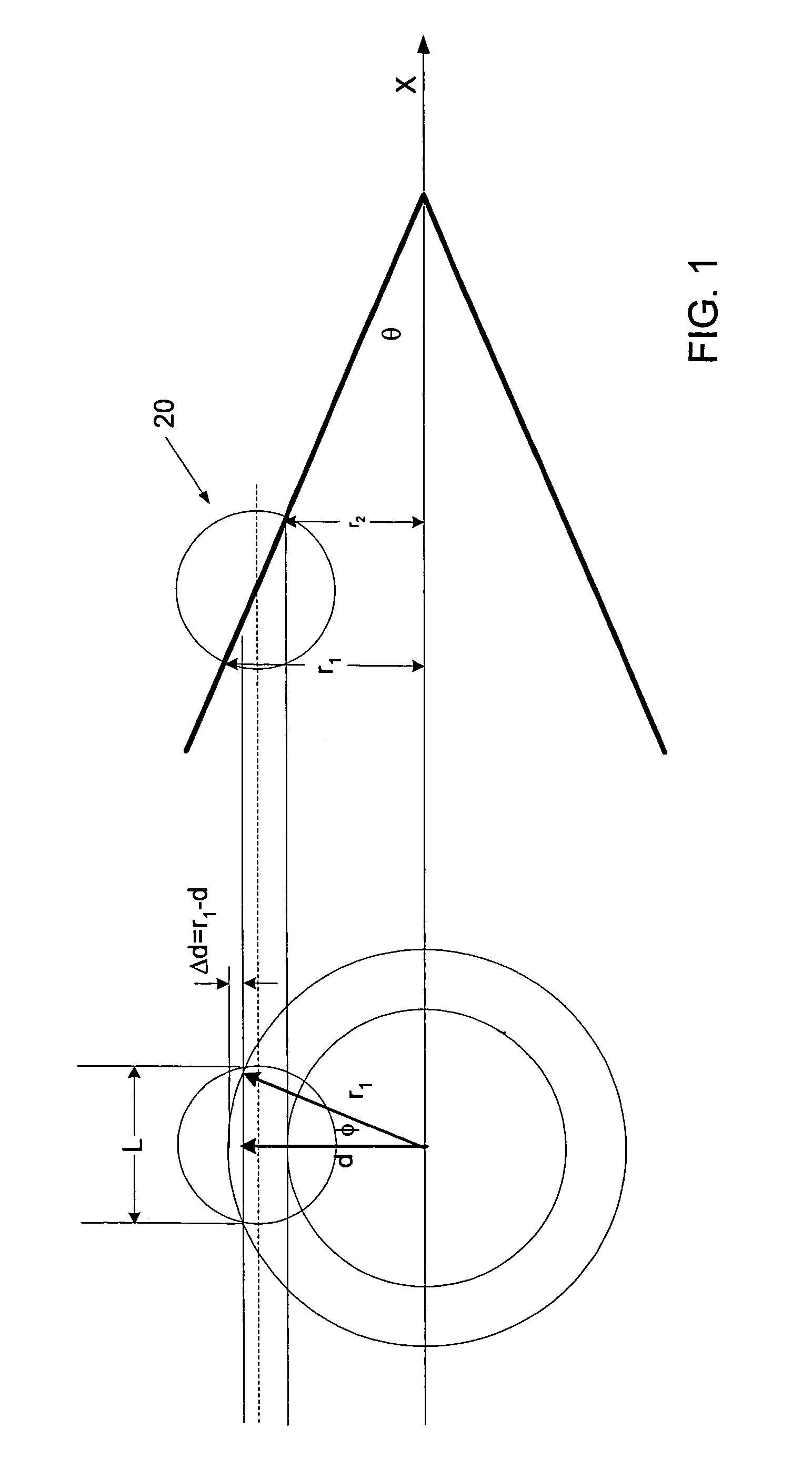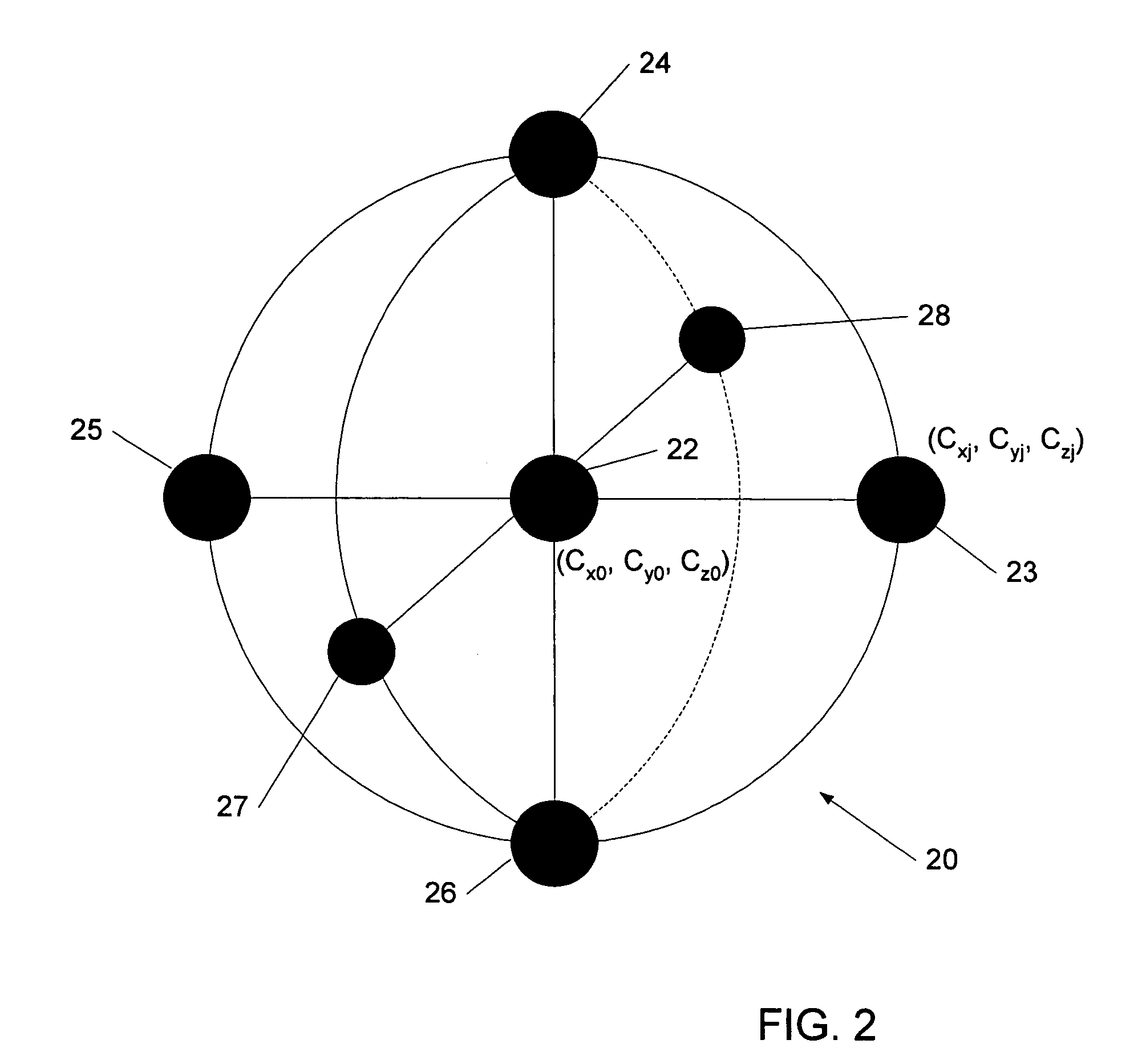System and method for disambiguating shooter locations
a technology of disambiguation and location, applied in the field of law enforcement technologies and security, can solve the problems of high timing precision needed to obtain accurate shockwave-only solutions, inability to determine the distance between the sensor(s) and the origin of the shockwave, and inability to use shockwave-only measurements
- Summary
- Abstract
- Description
- Claims
- Application Information
AI Technical Summary
Benefits of technology
Problems solved by technology
Method used
Image
Examples
Embodiment Construction
[0028]The invention is directed, inter alia, to a system and method for determining the direction, as defined by azimuth and elevation, of a shooter location and a trajectory of supersonic projectiles based on shockwave-only information.
[0029]Supersonic projectile trajectories are estimated solely from projectile shockwave arrival times measured by several closely spaced sensors distributed throughout a “small” measurement volume referred to as antenna. A measurement volume is considered small if the sensor spacing is 2 meters or less. Once the projectile's trajectory is identified, the location of the shooter is known except for distance back along the trajectory. This distance can be found if the antenna also obtains the arrival time of the muzzle blast sound. However, the muzzle blast is not always detectable, so that an accurate shockwave-only solution is essential for determining the trajectory.
[0030]Referring now to FIG. 1, the shockwave surface is considered to be an expandin...
PUM
 Login to View More
Login to View More Abstract
Description
Claims
Application Information
 Login to View More
Login to View More - R&D
- Intellectual Property
- Life Sciences
- Materials
- Tech Scout
- Unparalleled Data Quality
- Higher Quality Content
- 60% Fewer Hallucinations
Browse by: Latest US Patents, China's latest patents, Technical Efficacy Thesaurus, Application Domain, Technology Topic, Popular Technical Reports.
© 2025 PatSnap. All rights reserved.Legal|Privacy policy|Modern Slavery Act Transparency Statement|Sitemap|About US| Contact US: help@patsnap.com



